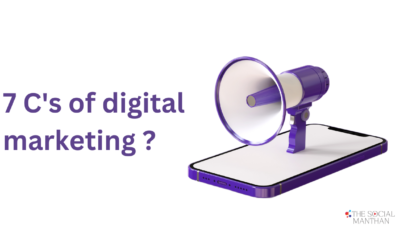Content creation can feel like a daunting task, but I’ve found that I can get more mileage out of a single blog post by repurposing it in various ways. By transforming my existing work into different formats, I not only extend its reach but also make the most of my creative efforts. In this post, I’ll share simple strategies to help you breathe new life into your blog posts and maximize their potential. Let’s dive in and explore how you can make your content work harder for you!
Key Takeaways:
- Transform a single blog post into multiple formats, such as infographics, videos, or podcasts, to reach different audiences and platforms.
- Utilize social media snippets and quotes from the blog post to generate interest and direct traffic back to the original content.
- Update and refresh older blog posts with new information to extend their lifespan and relevance, giving them a second chance at engagement.
Mining Your Blog Post for Golden Nuggets
Your original blog post is a treasure trove of information waiting to be mined. By digging into it, I can uncover valuable snippets and insights that can extend its reach, making it relevant across multiple platforms. This process not only enhances the post’s lifespan but also enriches my overall content strategy, allowing me to present the same core ideas in diverse formats.
Identifying Key Themes and Takeaways
Reflecting on your blog post allows you to identify the key themes and takeaways that resonate most with your audience. I often jot down the main points I made, looking for common threads that can inspire new content creation. These insights serve as the foundation for future posts, ensuring I focus on what truly matters to my readers.
Extracting Quotes and Data Points for Social Sharing
Selecting impactful quotes and data points from your blog post can fuel your social media strategy. By curating these snippets, you can create engaging content that highlights your expertise while encouraging audience interaction. I often use tools like Canva to design visually appealing graphics around these quotes, ensuring they stand out in the crowded social landscape.
To start extracting quotes and data points, I first revisit my blog post to find eye-catching phrases or striking statistics that encapsulate my message. I look for statistics that support my claims, such as industry benchmarks or survey results, which offer credibility and invite sharing. When crafting social media posts, I try to frame my quotes in a conversational tone, ensuring they’re not only informative but also relatable. Including a call to action, like inviting followers to discuss their thoughts or experiences related to the quote, can create further engagement. This approach not only amplifies my reach but also encourages community building around my content.
Transforming Written Content into Diverse Formats
Using one blog post as a springboard, I can develop a variety of content formats that will expand my reach and engage different audiences. By transforming a piece of written content into visual or auditory forms, I not only keep my material fresh but also appeal to consumers of varied learning styles. This helps in establishing a more multifaceted brand presence online, allowing me to connect with readers and listeners alike.
Creating Engaging Infographics from Text
Infographics are a powerful way to present data and insights visually, transforming dense written content into digestible imagery. By taking key points and statistics from my blog post and pairing them with eye-catching graphics, I can create a compelling visual story that draws in viewers. Tools like Canva or Piktochart make it simple to design these infographics, which can then be shared on social media or embedded within my site to grab attention quickly.
Crafting Snappy Videos and Podcasts
Videos and podcasts can convert the essence of a blog post into engaging multimedia content. By summarizing the main ideas into bite-sized segments, I can capture the interest of those who prefer listening or watching over reading.
For crafting snappy videos, I focus on visually summarizing the key points with dynamic visuals and crisp editing. With tools such as Adobe Spark or Animoto, my videos can come to life with animations or clips that highlight important information and keep viewers entertained. Similarly, converting my blog content into a podcast episode involves discussing the main themes conversationally, which allows me to research deeper into specific aspects while keeping listeners engaged. Sharing case studies or personal anecdotes during the podcast adds authenticity, making the content relatable and enjoyable.
Amplifying Reach Through Various Channels
Maximizing the exposure of a single blog post involves creative distribution strategies that tap into various online platforms. It’s about thinking beyond the original audience and leveraging multiple channels to ensure your content reaches as many eyes as possible. By diversifying where and how you share your blog, you greatly enhance its visibility and engagement potential.
Distributing Content on Social Media Platforms
Social media platforms provide an ideal playground for sharing your content. I utilize a mix of Facebook, Twitter, LinkedIn, and Instagram to distribute my blog posts, tailoring the message for each platform’s audience. For instance, Instagram Stories allow me to share engaging visuals with quick links, while LinkedIn lets me tap into a professional network that values in-depth discussions. Regularly scheduling these posts, along with engaging snippets, can significantly boost reach and interaction.
Leveraging Email Newsletters for Wider Audience
Email newsletters are a powerful tool to amplify your blog post’s reach. By sending out a well-crafted newsletter to your subscriber list, I can highlight key takeaways from the blog while providing links for readers to dive deeper into the content. This not only drives traffic but also nurtures the reader’s relationship with the material.
Using segmentation strategies for your email newsletters can significantly enhance their effectiveness. For example, targeting specific groups based on their interests can lead to higher open rates and engagement. If your blog post addresses productivity tips, sending it to subscribers who have shown interest in time management can lead to a more engaged audience. I’ve found that creating compelling subject lines and including eye-catching visuals can further entice readers to click through, turning a single blog post into a valuable resource for many. Regularly featuring updated content keeps your newsletter fresh and helps position you as a go-to resource in your field.
Building an Ecosystem of Related Content
Creating an interconnected web of blog posts elevates your content strategy, making it easier for readers to navigate through related topics. By linking various pieces of content, I provide a richer experience that keeps your audience engaged and encourages them to explore more of your work. This method not only helps in retaining visitors longer on your site but also enhances your SEO efforts by establishing a network of relevant keywords and topics.
Linking Blog Posts to Other Relevant Articles
Linking your blog posts to other relevant articles on your site forms a cohesive reading experience that encourages visitors to dive deeper. I often reference and hyperlink to previous posts that elaborate on certain points, providing additional insights or context. This not only creates a valuable resource for your readers but also increases page views and keeps your audience engaged.
Developing a Series Around a Central Idea
Crafting a series based on a central theme allows for in-depth exploration of complex topics, generating anticipation for future installments. Each post can tackle a different aspect of the central idea, creating a narrative that unfolds over time. For example, I once created a series discussing the various facets of digital marketing, where each article focused on elements like social media strategies, SEO tactics, and email marketing effectiveness. This continuous storytelling encourages readers to follow along and come back for the next post, thus building a loyal audience.
Engaging readers with a series around a central idea not only keeps them interested but also solidifies your authority on the subject. By breaking down intricate topics into digestible chunks, I make them more approachable. Readers are more likely to share a series, drawing in new viewers, while the interconnected nature of the posts benefits my site’s SEO ranking. Each article serves as a building block, contributing to a larger narrative that invites readers to dive deeper into the subject and encourages ongoing conversation, enhancing community engagement with my content.
Measuring Impact and Refining Strategy
Evaluating the performance of your content provides clear direction for future decisions. By diving deeper into analytics, you can determine what resonates with your audience and identify areas for improvement. This continuous process not only informs your content creation but also enhances engagement and drives growth within your blog’s ecosystem.
Analyzing Engagement Metrics and Feedback
Engagement metrics like page views, social shares, and comment interactions serve as barometers for your content’s effectiveness. By monitoring these numbers closely, you can uncover which topics ignite conversation and which may need a rework. Additionally, don’t overlook qualitative feedback — reader comments and social media responses can provide invaluable insights about your audience’s preferences and needs.
Adjusting Future Content Based on Insights
With analysis in hand, adapting your content strategy becomes seamless. Tailoring future posts to align more closely with what your audience wants not only enhances engagement but fosters loyalty. You might uncover preferences for specific formats, such as video or infographics, and even shifts in topic interests that can guide your next batch of content. For example, if you notice a spike in interest around a particular subject, consider producing complementary pieces or expanding on that theme. This proactive approach takes advantage of established interest, boosting your blog’s relevance in the process. Writing with your audience in mind ensures that you remain connected and responsive to their evolving needs, ultimately driving sustained growth. By embedding a feedback loop into your strategy, you’re not just sharing content; you’re creating value that resonates deeply with your readers.
To wrap up
Drawing together all the ideas we’ve explored, repurposing your content is a great way to extend the life of a single blog post. I encourage you to think creatively about how you can transform your existing content into various formats that resonate with different audiences. Whether it’s turning a post into a video, infographic, or social media snippets, each piece can engage your audience in new ways. By doing this, you not only save time but also maximize your efforts and reach more readers. So, let’s get started and make the most of what you’ve already created!
FAQ
Q: What is repurposing content and why is it important?
A: Repurposing content involves taking existing material, such as a blog post, and transforming it into different formats to reach broader audiences. This process can include creating videos, infographics, podcasts, or social media posts from the original content. It’s vital because it allows creators to maximize the value of their initial work, attract new readers, and engage varying audience preferences. By diversifying content formats, you can also enhance SEO and increase the overall visibility of your brand.
Q: How can I effectively repurpose a single blog post into other formats?
A: To effectively repurpose a blog post, begin by identifying the key points and insights within the original content. From there, consider different formats such as: 1) Creating a video summarizing the main ideas, 2) Designing an infographic that visualizes the data or concepts, 3) Developing a podcast episode where you expand on the topic or invite guests for discussion. Additionally, you can create social media snippets that highlight quotes or tips from the post, or convert it into a downloadable guide or e-book for more in-depth exploration.
Q: What are some strategies to promote repurposed content?
A: To effectively promote repurposed content, start by sharing it on various social media platforms where your audience is active. Tailor your promotional messages to fit each platform’s style and audience. Additionally, consider cross-linking different formats; for instance, include links to your video or podcast in the original blog post. Engaging with communities, groups, or forums relevant to the content topic can also increase visibility. Finally, utilize email marketing to inform your subscribers of the new formats, providing them with an option to engage with the content in a way that suits their preferences the best.








